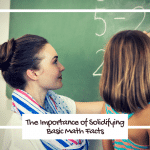I started teaching back in the days when supplies were limited and you saved everything. I remember days when I taught kindergarten with only toilet paper rolls, markers and a package of rainbow construction paper, which was expected to last for the first nine weeks, with the possibility of getting wiggle eyes to add to the pot the second nine weeks.
With the introduction of the internet (yes, I remember the time when it was first introduced) the variety of ideas and lesson plans is immeasurable! Yet, with that positive increase comes the increase of testing and taking away the time that students could use to be creative and replace it with test prep or classroom assessments.
I still find art a critical part of my elementary students’ week. Developmentally young kids like to explore and they like to be create. They like to express themselves in different ways and art can meet that need. Older kids enjoy this process too. We have to be creative as teachers to be able to fit in the priorities we feel need to be taught, but may not necessarily fit into the teaching box. Art provides not only the vehicle for expression and creativity, it also involves reasoning and problem solving skills.
In order to meet this ‘need’ for creativity and problem solving, I tie art in with other components of my lesson plans. I have Monday and Friday mornings set aside for art history, which ties into our social studies curriculum, but the rest of the week I pull in craft projects that are aligned with the other core subjects. There may be days that I pull out a variety of objects and have the kids choose words from spelling lists to create with those objects. I am always amazed at the creativity that comes out and how I’m allowed to see things through the eyes of my young students. There are tons of similar activities that can be done for grammar as well.
Since we work off of thematic units for our science and social studies, there are tons of art activities that can be pulled in for lessons by searching online. Pinterest is a perfect spot to search, although Facebook posts are following right along through the newsfeed. Teachers Pay Teachers has some amazing items as well, with freebies scattered throughout.
The idea is not to get overwhelmed, but to find good, hands-on supplemental material that is art-based. In order to stay on track, remember the following:
1. Do searches based on your specific theme or concept and stay away from the ideas that are not aligning with what you are looking for. Don’t do general searches for ‘science art’. Be specific, looking for ideas that follow ‘art ideas for the lifecycle of a butterfly’.
2. Use your resources wisely and make good use of your time as well. If you have found three great ideas, don’t search five more sites for other ideas. Stick with the ideas that you know will fit into your time frame and curriculum.
3. Make sure the project is developmentally appropriate. If you are working with second or third graders, don’t expect them to be able to stay focused on a project that will take three class periods to complete. Precious learning time will be lost, frustration from both you and your students will ensue and retention will be low. On the other hand be sure that the project isn’t too young for your students. Third graders will not appreciate a project they did in Preschool.
4. Make sure you aren’t going to spend a fortune on supplies for the project. Ever seen those $100 science fair projects parents ‘help’ with? Don’t fall into that category. If you spend a ton of money on a project chances are you aren’t going to want to do that again. Construction paper, paint, straws and wiggle eyes are cheap, but mod podge, printing off pictures and wooden planks aren’t. Stick with the basics and make them work.
5. Don’t expect every student to appreciate your effort. Most kids love to explore with art-based projects, except for Johnny. And Billy. And Susie. Don’t expect every single student to enjoy this process, and don’t expect them to take their time and engage for very long. Chances are a majority of your class will enjoy what you’ve planned, but don’t get discouraged, or worse, decide not to ever do a project again, based on the minority. Lay out your expectations and hold your students to those expectations, but don’t let the students who finish in ten minutes steal the glory from those who relish the activity for thirty.
How do you incorporate arts and crafts into your weekly lesson plans?




Leave a comment